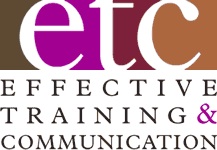How many of you liked learning grammar rules in high school English class and follow those rules consistently today? Not seeing a lot of hands going up … and not surprised. Lots of us still bare those painful scars of Sister Mary Apostrophe wielding that yardstick whenever we even thought of ending a sentence in a preposition.
So, let’s briefly discuss contemporary grammar as it affects what you write in the workplace. To provide that grammar reality check, consider these seven points to help you continue harnessing the power of words … grammatically correct words in this case.
1. Grammar should enhance your workplace communication efforts, not hinder them. Your workplace readers are always in a hurry – they skim what you write quickly. So, 90% of them won’t notice when they read a minor grammatical error. And 90% of those who do notice won’t care enough that you’ll lose points with them.
2. But, obvious errors in punctuation, grammar or word use do jump out at readers. You do run the risk of losing credibility or professionalism points. So, if you’re going to make mistakes, make little ones. Inconsistency cues awareness. Better to write something the same way all the time – even if it’s wrong – than to write it one way in one sentence and another way in the next. Even if both ways are equally correct, the inconsistency will stand out and one way will look like a mistake.
3. While some Spell Checkers will catch a comma that should be a semi-colon or other punctuation errors, they won’t pick up on incorrect word use – they’re not that smart. Spell Checkers will tell you if there is a word spelled that way (that it recognizes from it’s own internal dictionary) but won’t tell you if it’s the correct word to use in that context. It won’t catch there that should be their or does that should be did or employees’ that should be employee’s.
4. So, proofread everything you write in the workplace carefully. Go beyond Spell Check. Proofread aloud – that’s what good writers do. Proofread backwards – that’s what the pros do.
5. Grammar rules reflect evolving usage norms, just like the dictionary. Communication norms in our culture have changed dramatically since your high school English teacher was in high school. But, you may still be operating with values and habits you were taught which were based on what was considered appropriate – or not – in pre-WWII America.
6. You might be thinking that some people you want to influence most at work still write with elements of a more traditional, formal and conservative style. And Reader-Centricity does require you to communicate with other people the way they want you to communicate with them. So, how do you deal with this issue if you want to communicate differently?
7. Just because people write with what you may consider an ‘old–fashioned’ style, that doesn’t necessarily mean they’re doing that on purpose and consciously. They’re creatures of habit just like you are. So, if your boss sounds like your high school English teach and you want to look good in his or her eyes, try to determine if the boss communicates that way on purpose. And, more importantly, if the boss will lose respect for you if you communicate in a different or more contemporary manner.
Just remember, I’m not asking you to change any of your writing style or word use habits. But, I am asking you to challenge those habits in light of what we discuss here. Ask yourself if these different approaches make sense to you today and if you’re willing to change … or not. Either way, make it a conscious decision and stick to it.

